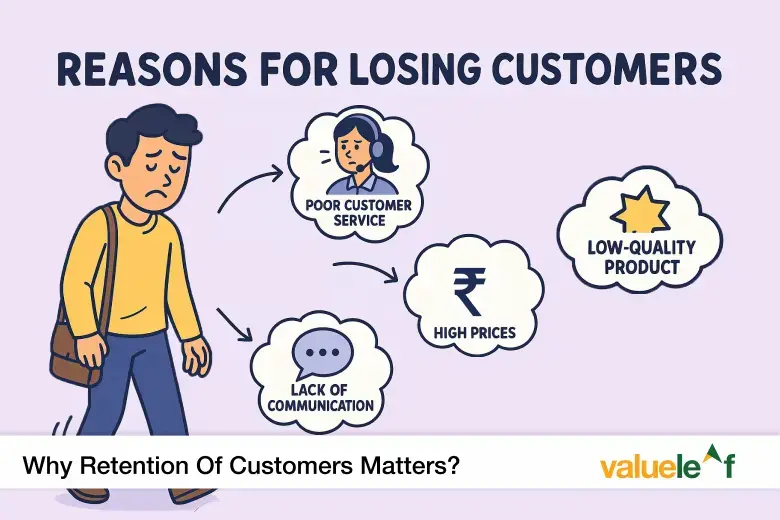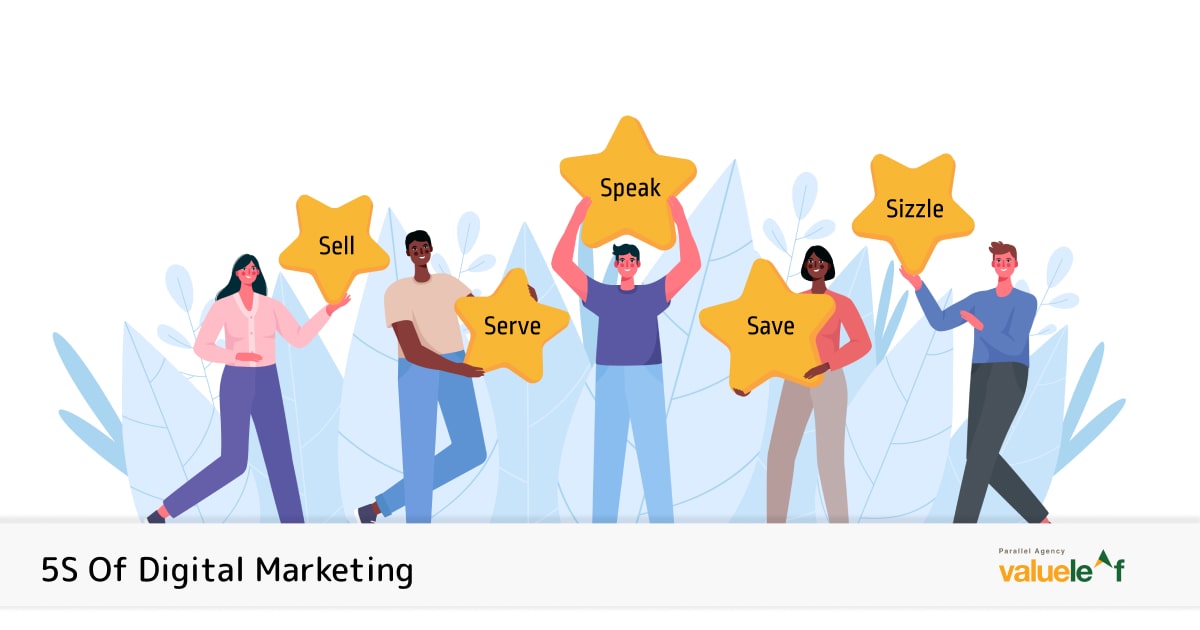Introduction:
In today’s competitive market place is more cost-effective than acquiring new ones. Boosting customer retention rates by just 5% can increase profits by up to 95%. Yet, many businesses overlook key customer retention strategies in favour of acquisition. Using customer feedback analysis, brands can understand why customers leave and take proactive steps to increase customer retention. Implementing smart customer retention management strategies, improving customer loyalty, and adopting customer retention marketing techniques can significantly reduce churn. With the right retention marketing strategies, businesses can build long-term relationships that drive sustainable growth and brand advocacy.
Common Reasons for Losing Customers
- Poor Customer Service: Customers expect prompt, helpful, and friendly service. Failing to meet these expectations can drive them away.
- Lack of Personalization: Generic marketing messages and offers that don’t resonate with individual customer needs can lead to disengagement.
- Inconsistent Communication: Irregular or irrelevant communication can make customers feel neglected.
- Neglecting Feedback: Ignoring customer feedback or failing to act on it can erode trust and satisfaction.
- Overpromising and Underdelivering: Setting unrealistic expectations and failing to meet them damages credibility.
The Role of Customer Feedback Analysis in Retention
Analyzing customer feedback is crucial for identifying pain points and areas for improvement. Tools like surveys, reviews, and social media listening can provide valuable insights. Implementing changes based on this feedback demonstrates that you value your customers’ opinions, fostering loyalty.
Customer Retention Management Strategies That Work
- Personalized Onboarding: Tailor the onboarding process to individual customer needs to enhance engagement from the start.
- Loyalty Programs: Reward repeat customers with exclusive offers, discounts, or early access to new products.
- Proactive Support: Reach out to customers before issues arise, offering assistance and resources.
- Consistent Communication: Maintain regular, relevant contact through preferred channels to keep your brand top-of-mind.
Customer Retention Strategies to Reduce Churn
- Segment Your Audience: Understand different customer segments and tailor strategies accordingly.
- Monitor Customer Behaviour: Use analytics to identify patterns that may indicate dissatisfaction.
- Solicit Regular Feedback: Encourage customers to share their experiences and suggestions.
- Implement Feedback Loops: Act on feedback and communicate changes back to customers.
Increase Customer Retention Through Customer-Centric Culture
Fostering a customer-centric culture involves aligning your company’s values, operations, and goals with customer needs. This approach ensures that every team member prioritizes customer satisfaction, leading to improved loyalty and retention.
Improving Customer Loyalty Through Consistency and Trust
Consistency in product quality, service, and communication builds trust. Customers are more likely to remain loyal to brands they perceive as reliable and trustworthy. Transparency and integrity in all interactions further strengthen this trust.
Customer Retention Marketing: Stay Top-of-Mind
Retention marketing focuses on engaging existing customers through personalized content, exclusive offers, and consistent communication. Strategies include email marketing, loyalty programs, and personalized recommendations, all aimed at enhancing the customer experience and encouraging repeat business.
Retention Marketing Strategies for Long-Term Growth
- Data-Driven Insights: Utilise customer data to inform marketing strategies and personalise experiences.
- Cross-Selling and Upselling: Offer complementary products or services to increase customer value.
- Customer Advocacy Programs: Encourage satisfied customers to become brand advocates, sharing their positive experiences.
- Continuous Improvement: Regularly assess and refine retention strategies based on performance metrics and customer feedback.
Conclusion: Focus on Relationship, Not Just Retention
Retaining customers requires more than just reactive measures; it demands a proactive, relationship-focused approach. By understanding the reasons behind customer attrition and implementing comprehensive retention strategies, businesses can foster loyalty, enhance customer satisfaction and drive sustainable growth.
FAQs: Customer Retention and Loyalty
What is customer retention?
Customer retention refers to a company’s ability to keep its customers over time, encouraging repeat business and preventing them from switching to competitors.
Why is customer retention important?
Retaining existing customers is more cost-effective than acquiring new ones and contributes to steady revenue and business growth.
How can I measure customer retention?
Metrics such as repeat purchase rate, customer lifetime value (CLV), and churn rate help assess customer retention performance.
What role does customer feedback play in retention?
Customer feedback provides insights into satisfaction levels and areas for improvement, enabling businesses to address issues proactively and enhance the customer experience.
How can I improve customer loyalty?
Strategies include delivering consistent value, personalizing experiences, engaging customers through loyalty programs, and maintaining open communication.
How does poor customer service impact customer retention?
Bad service breaks trust and creates frustration, making customers feel undervalued and more likely to leave for a competitor who treats them better.
Why is product quality important for retaining customers?
If a product doesn’t meet expectations, customers lose confidence and won’t return. Consistent quality builds loyalty and trust.
What role does pricing play in losing customers?
Unfair or unclear pricing can drive customers away, especially if competitors offer better value for money or more flexible options.
How does lack of communication lead to customer loss?
When businesses don’t update or engage with customers, it creates confusion or neglect. Customers feel ignored and may lose interest.
What are the effects of ignoring customer feedback?
It signals you don’t care. This frustrates loyal customers and shows you’re not interested in improvement, prompting them to leave.
Why do customers switch to competitors?
They find better service, pricing, product features, or overall experience elsewhere. Competitors may simply meet their needs more effectively.
How can a bad user experience drive customers away?Confusing websites, slow service, or difficult checkout processes frustrate users. If it’s hard to buy or get support, customers leave.




